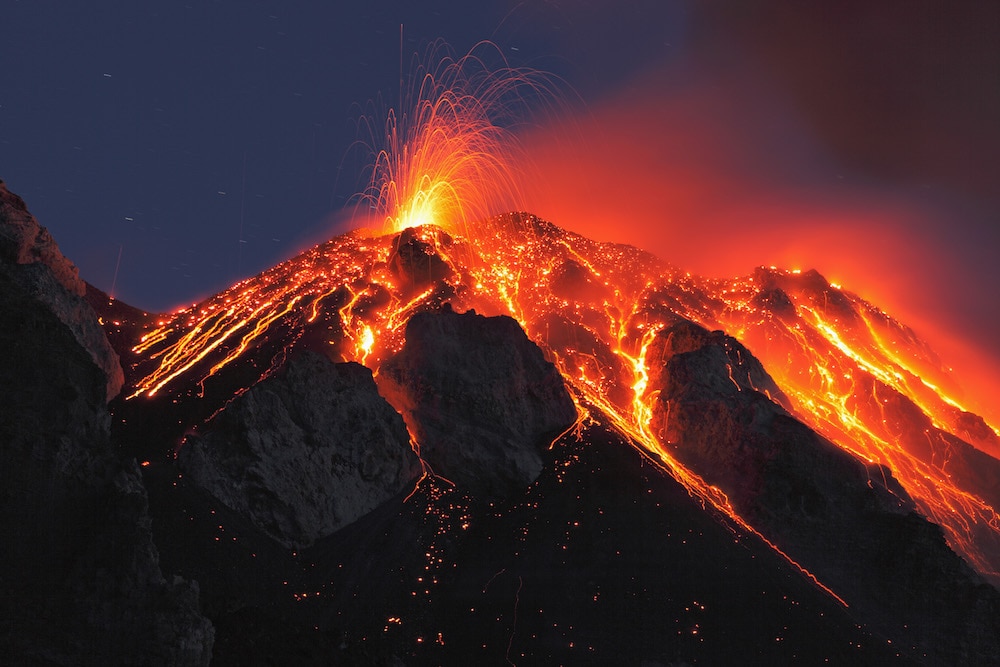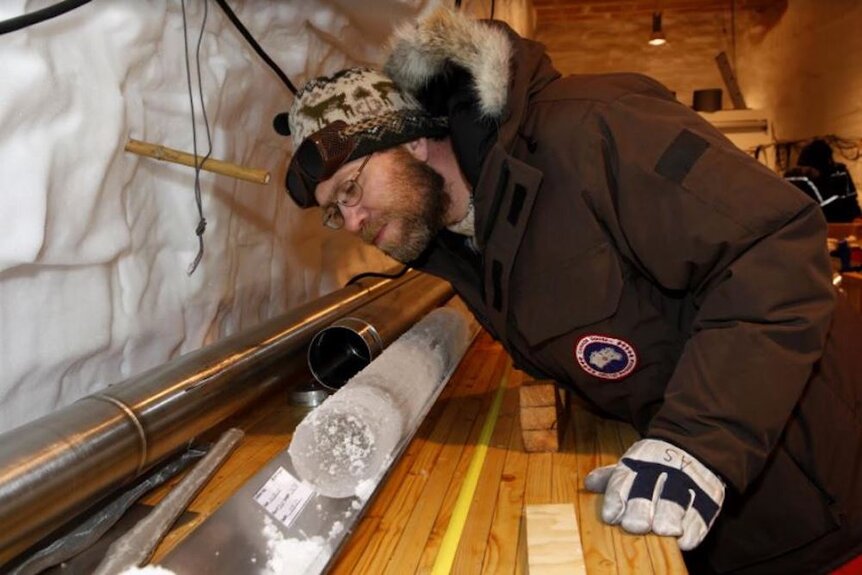Create a free profile to get unlimited access to exclusive videos, sweepstakes, and more!
Volcanoes are bad, in the past they were way worse, and it could happen again!
Things could be so much worse!

If you live near a fault line or an active volcano, you might live with a constant low-level fear of violent tectonic activity. Eruptions like those that occurred at Mount St. Helens and Vesuvius give a hint of the Earth’s destructive potential, but a recent study published in the journal Climate of the Past reveals a volcanic history much more violent than anything we’ve experienced in recorded history.
Anders Svensson, Associate Professor in the Physics of Ice, Climate and Earth department at the Niels Bohr Institute, along with colleagues, used ice cores to peer into the deep history of Earth’s volcanic activity. Looking back over 60,000 years, they identified 85 large volcanic eruptions, 69 of which were larger than the Tambora eruption in 1815, the largest volcanic eruption in recorded history.
“When you have big volcanic eruptions, sulphate and ash is blown high up in the atmosphere,” Svensson told SYFY WIRE. “The sulphate can make it into the stratosphere where it’s distributed over the entire world.”
Some of that sulphate then settles to the ground and, if the conditions are right, gets captured in ice. The team looked at ice cores in Greenland and Antarctica and compared them. This step was important because signals that show up in both locations indicate eruptions powerful enough to have a global impact. It also allowed them to calibrate and more accurately date the eruptions. By finding a signal in both places, and counting the annual ice layers between, they’re able to narrow in on an estimated age.
The period of time scientists are investigating dates back to the last glacial period and helps to inform climate models. As ash, sulphates, and carbon dioxide flood into the atmosphere, they change the radiation patterns reaching the Earth’s surface and impact global temperatures. It’s not wholly clear what might have driven these massive eruptions but melting ice could have been a contributing factor.
“At the end of the last glacial period, the big ices melted down and sea level rose by 120 meters. That made the tectonics unstable, and you release the pressure and most likely that led to more volcanism,” Svensson said. “Today, we’re melting lots of ice but we’re talking about hopefully one meter of sea level rise this century. It’s a different scale, I don’t think we can claim we’re increasing volcanism due to sea level rise at this point.”
That doesn’t necessarily mean we’re totally out of the woods, though. The ice cores give us a record of activity going back 60,000 years, which tells us something about the frequency of volcanism throughout the past.
Eruptions on the same scale as Tambora happen throughout the geological record roughly once or twice a millennium. They don’t, however, happen in any sort of predictable pattern. What’s clear is we’ve seen a relatively mild form of volcanism during our recorded history, when compared with what we know happened over the last 60,000 years, and things get even worse when we look a little further back.
“Our target now is the Toba eruption that occurred 74,000 years ago in Sumatra. It’s probably the biggest eruption of the last one or two million years, with a crater ranging 150 kilometers,” Svensson said.
That eruption may have had an incredible impact not just on the climate but on our species. Just how much of an impact it had isn’t yet clear, but Svensson and his colleagues are planning to figure it out. The ice cores in Greenland go back roughly 120,000 years and the Antarctic ices go back 800,000. The story of the Toba eruption is in the ice, we just need to find it.
“We know where to look, we have a couple of candidates. We’re going to pinpoint the most likely one and quantify how much sulphate we got from that eruption. If we can get the right numbers for the sulphate, hopefully that can help guide the discussion,” Svensson said.
Sometimes it’s hard to look around and find the silver lining, but at least the world isn’t literally exploding beneath our feet. Yet.



























